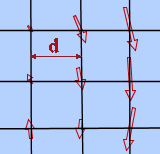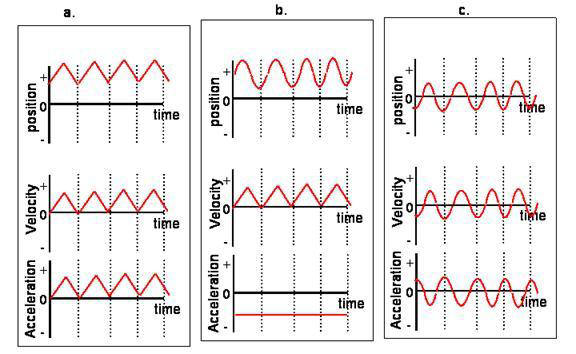
In this virtual laboratory you will use an on-line simulation from the University of Colorado PhET group to study radio waves and electromagnetic fields.
Link to the simulation: http://phet.colorado.edu/en/simulations/radio-waves
Click Help to make sure you are aware of all controls.
Play with the simulation.
In manual mode try to move the electron with constant velocity. What
happens?
Make the electron start and stop rapidly. What happens?
How is the radiation field produced?
How is it detected?
Now answer the questions below and then submit your answers on Blackboard.
Set the transmitter movement to oscillate. This is how radio waves are broadcast. Display the radiation field and explore the various field type and field sense displays. Then settle on curve with vectors, force on electron.
What does this curve represent?
Display the full field. Force or field vectors are displayed on the points of a square grid. With the frequency set at the mid-point of the slider and the amplitude set at the mid-point of the slider, estimate the wavelength of the wave in units of grid spacings d.

Use the pause button and step button in order to get a good measurement, and round to the nearest integer. Remember that from one node to the next is one half wavelength. What is your estimate of the wavelength in units of grid spacings?
In the simulation, if you increase the amplitude of the oscillations, what happens to the wavelength?
Use the simulation to decide which of the following statements is true.
(a) If the oscillation frequency of the transmitting electron decreases, the
oscillation frequency of the electron in the receiver is instantaneously
affected.
(b) The electron in the receiving antenna oscillates at a lower frequency than
the electron in the transmitting antenna because of the distance between the
antennas.
(c) If the frequency of oscillation increases but the amplitude of the
electron oscillation remains the same, then the electron in the transmitting
antenna is experiencing larger accelerations.
(d) If the amplitude increases but the frequency remains the same, the
electron at the receiving antenna experiences larger peak forces but oscillates
at the same frequency as before.
(e) If the frequency of the transmitting electron decreases by a factor of
two, it will now take longer for the electromagnetic signal to reach the
receiving antenna.
(f) If the frequency decreases, the wavelength decreases.
(g) The electromagnetic waves generated by the transmitting antenna
produce currents in the receiving antenna.
(h) When the electron in the transmitting antenna is at its peak height,
the electron in the receiving antenna is always also at its peak height.
Which one of the following sets of graphs of position vs. time, velocity vs. time, and acceleration vs. time describes the motion of the electron in the receiving antenna?

Now go to Canvas, Assignments, Extra Credit 8 and answer questions 1 - 5. You can submit twice and the highest score counts.